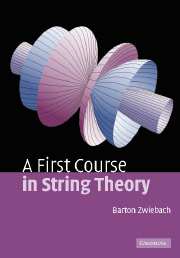Book contents
- Frontmatter
- Contents
- Foreword
- Preface
- Acknowledgements
- Part I Basics
- 1 A brief introduction
- 2 Special relativity and extra dimensions
- 3 Electromagnetism and gravitation in various dimensions
- 4 Nonrelativistic strings
- 5 The relativistic point particle
- 6 Relativistic strings
- 7 String parameterization and classical motion
- 8 World-sheet currents
- 9 Light-cone relativistic strings
- 10 Light-cone fields and particles
- 11 The relativistic quantum point particle
- 12 Relativistic quantum open strings
- 13 Relativistic quantum closed strings
- Part II Developments
- References
- Index
10 - Light-cone fields and particles
from Part I - Basics
- Frontmatter
- Contents
- Foreword
- Preface
- Acknowledgements
- Part I Basics
- 1 A brief introduction
- 2 Special relativity and extra dimensions
- 3 Electromagnetism and gravitation in various dimensions
- 4 Nonrelativistic strings
- 5 The relativistic point particle
- 6 Relativistic strings
- 7 String parameterization and classical motion
- 8 World-sheet currents
- 9 Light-cone relativistic strings
- 10 Light-cone fields and particles
- 11 The relativistic quantum point particle
- 12 Relativistic quantum open strings
- 13 Relativistic quantum closed strings
- Part II Developments
- References
- Index
Summary
We study the classical equations of motion for scalar fields, Maxwell fields, and gravitational fields. We use the light-cone gauge to find plane-wave solutions to their equations of motion and the number of degrees of freedom that characterize them. We explain how the quantization of such classical field configurations gives rise to particle states – scalar particles, photons, and gravitons. In doing so we prepare the ground for the later identification of such states among the quantum states of relativistic strings.
Introduction
In our investigation of classical string motion we had a great deal of freedom in choosing the coordinates on the world-sheet. This freedom was a direct consequence of the reparameterization invariance of the action, and we exploited it to simplify the equations of motion tremendously. Reparameterization invariance is an example of a gauge invariance, and a choice of parameterization is an example of a choice of gauge. We saw that the light-cone gauge – a particular parameterization in which τ is related to the light-cone time X+, and σ is chosen so that the p+-density is constant – was useful to obtain a complete and explicit solution of the equations of motion.
Classical field theories sometimes have gauge invariances. Classical electrodynamics, for example, is described in terms of gauge potentials Aμ. The gauge invariance of this description is often used to great advantage. The classical theory of a scalar field is simpler than classical electromagnetism.
- Type
- Chapter
- Information
- A First Course in String Theory , pp. 166 - 186Publisher: Cambridge University PressPrint publication year: 2004



